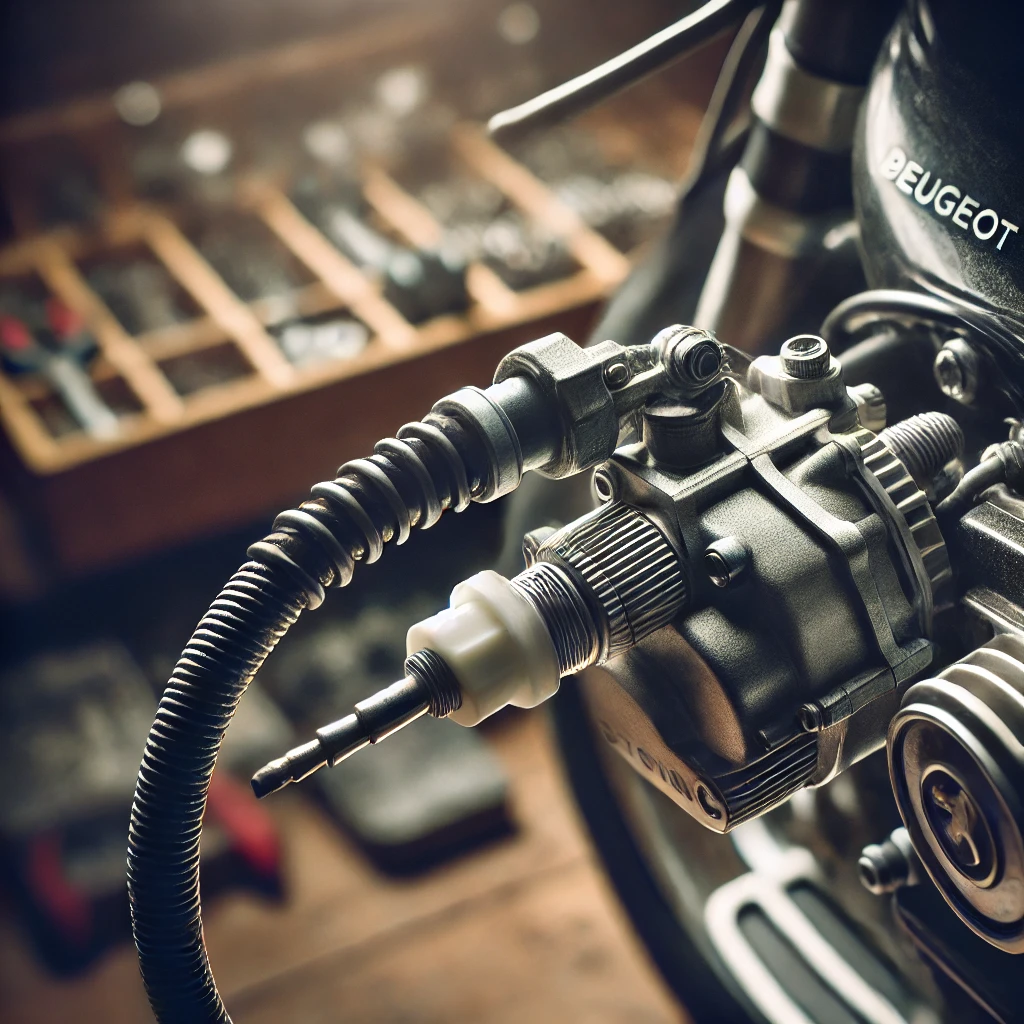The Peugeot GT10C is a classic model that captivates scooter enthusiasts with its vintage charm and reliability. Central to its smooth operation is a component often unnoticed until issues arise—the cable accelerateur, or throttle cable. This long-form article delves into the intricacies of the cable accelerateur Peugeot GT10C, offering enthusiasts and owners alike a comprehensive guide to understanding, maintaining, and replacing this crucial part.
Introduction to the Cable Accelerateur Peugeot GT10C
The throttle cable in vehicles, particularly in vintage models like the Peugeot GT10C, plays a pivotal role in managing the engine’s power output. By linking the throttle (accelerator) handle to the engine, this cable controls the speed and acceleration of the scooter. Understanding its function and maintenance is key to ensuring a smooth ride and extending the vehicle’s longevity.
Unraveling the Functionality of the Cable Accelerateur Peugeot GT10C
At its core, the cable accelerateur is simple in design but critical in function. It consists of a flexible, steel cable encased in a protective sleeve. When the throttle handle is twisted, the cable moves within this sleeve, triggering the carburetor or throttle body to increase or decrease fuel flow, thus controlling the engine’s speed.
Recognizing the Signs of Wear in the Cable Accelerateur Peugeot GT10C
Like any part subject to regular use, the throttle cable can wear out or degrade over time. Recognizable signs that the cable accelerateur may need replacement include:
- Sticking or sluggish throttle response
- Visible fraying or rust on the cable
- Difficulty in adjusting the throttle
- Inconsistent engine performance or idling
The Importance of Regular Maintenance
Regular inspection and maintenance of the cable accelerateur are crucial not only for optimal performance but also for safety. Lubricating the cable periodically ensures smooth operation and prevents premature wear. Adjusting the cable tension is also essential to maintain responsive control.
Troubleshooting Common Issues
Various issues may arise with the cable accelerateur Peugeot GT10C, from simple wear and tear to improper tension adjustments. A troubleshooting guide can help diagnose and resolve common problems such as:
- Slack in the cable leading to poor acceleration
- Over-tightened cable causing continuous engagement
- Old lubricant causing stickiness
Step-by-Step Guide to Replacing the Cable Accelerateur
Replacing a worn-out throttle cable is a manageable task for those familiar with basic scooter maintenance:
- Remove the handlebar cover to access the throttle assembly.
- Disconnect the old cable from the throttle handle and engine linkage.
- Guide the new cable along the exact path taken by the previous one to ensure proper alignment and functionality.
- Attach the new cable, adjust for proper tension, and test for smooth operation.
Opting for Genuine Parts
Using genuine Peugeot parts for replacements such as the cable accelerateur ensures compatibility and reliability. Genuine parts are designed to meet the specific requirements of the GT10C, offering peace of mind and preserving the scooter’s authenticity.
Can You Repair a Broken Cable Accelerateur?
While minor issues like slight fraying or sticking can often be repaired, a completely broken cable will typically require a full replacement to ensure safety and proper functionality.
Longevity of the Cable Accelerateur Peugeot GT10C
With proper maintenance, a cable accelerateur can last several years. However, the lifespan depends on riding conditions, frequency of use, and the level of maintenance performed.
Selecting the Right Cable for Your Peugeot GT10C
Choosing the correct cable is crucial. Always verify the part number and the specifications for your specific model year to ensure optimal performance and compatibility.
DIY vs. Professional Replacement
While many enthusiasts are capable of replacing a throttle cable on their own, consulting a professional can be beneficial for those unfamiliar with mechanical components or when dealing with unique or persistent issues.
Conclusion
Maintaining the cable accelerateur in your Peugeot GT10C is essential for reliable performance. By understanding its function, recognizing signs of wear, and knowing how to maintain or replace it, you can ensure that your vintage scooter remains a joy to ride for years to come. Whether you tackle maintenance yourself or seek professional help, the right care will keep your GT10C running smoothly.
FAQs About the Cable Accelerateur Peugeot GT10C
Q1: What is the cable accelerateur Peugeot GT10C?
A1: The cable accelerateur, or throttle cable, for the Peugeot GT10C is a crucial component that connects the throttle handle to the engine, allowing the rider to control the scooter’s speed and acceleration.
Q2: How do I know if my cable accelerateur needs replacing?
A2: Signs that you might need to replace your cable include sluggish throttle response, visible fraying or rust on the cable, sticking, or inconsistent engine performance.
Q3: How often should the cable accelerateur be maintained?
A3: It’s recommended to check and lubricate the throttle cable at least once a year or more frequently based on usage and exposure to harsh conditions.
Q4: Can I replace the cable accelerateur on my Peugeot GT10C myself?
A4: Yes, if you have basic mechanical skills, you can replace the throttle cable yourself. The process involves removing the handlebar cover, replacing the cable, and adjusting it for proper tension.
Q5: Should I use genuine parts for my Peugeot GT10C?
A5: Using genuine Peugeot parts is advised to ensure optimal performance and compatibility. Genuine parts are specifically designed to meet the operational needs of your GT10C.
Q6: What should I do if my throttle cable is sticking?
A6: If the throttle cable is sticking, try lubricating it first. If lubrication doesn’t resolve the issue, check for any damages or severe wear, which might require cable replacement.


